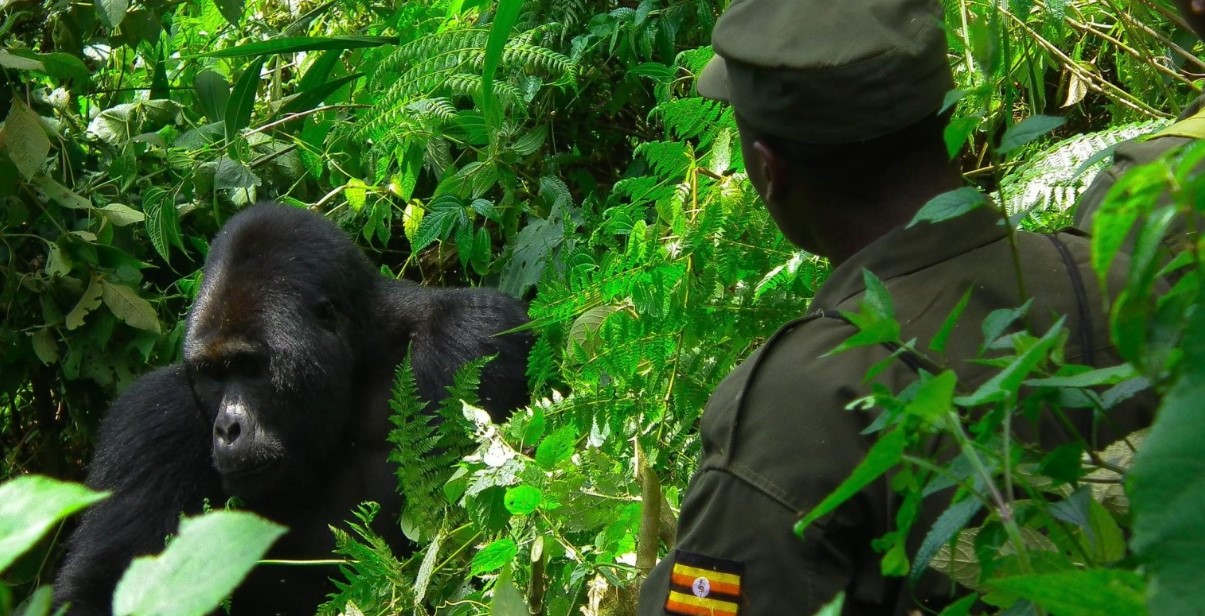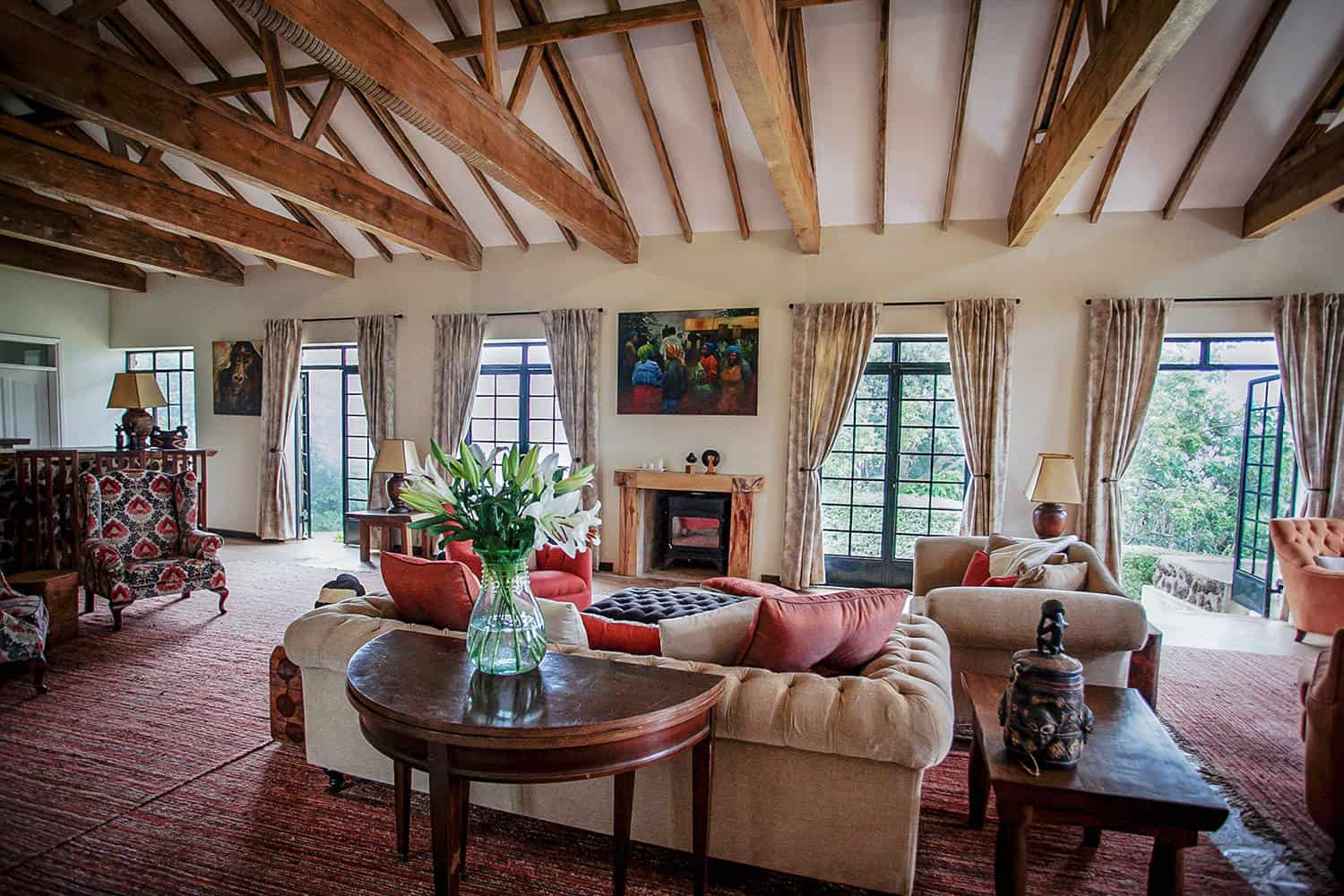
Gorilla Trekking in Bwindi Impenetrable Forest
Gorilla Trekking in Bwindi Impenetrable Forest. Nestled in southwestern Uganda, Bwindi Impenetrable National Park is a UNESCO World Heritage Site that covers over 320 square kilometers of dense forest. Known for its exceptional biodiversity, this ancient forest is home to around 400 mountain gorillas, nearly half of the world’s total population of this critically endangered species. Gorilla trekking here offers travelers the rare chance to witness these magnificent creatures in their natural habitat, surrounded by the towering trees and thick undergrowth that have earned the forest its “impenetrable” name.

What is Gorilla Trekking?
Gorilla trekking is a unique, immersive experience that allows visitors to venture deep into Bwindi’s forest to observe the gentle giants up close. Unlike traditional safaris where animals are seen from the safety of vehicles, gorilla trekking is done entirely on foot. Participants are led by trained guides and trackers, whose expertise in locating the gorillas is essential, as the families are often on the move. The trek itself can take anywhere from 2 to 8 hours depending on the location of the gorilla group, the terrain, and the weather conditions.
The treks usually begin early in the morning, and after a briefing at the park headquarters, small groups (limited to 8 people) head into the forest to find the gorillas. While this journey through the forest can be strenuous, the reward of encountering a gorilla family in the wild is unforgettable. These animals share around 98% of their DNA with humans, making their behavior and social structures remarkably similar to ours.
The Gorilla Families of Bwindi
Bwindi is divided into four sectors: Buhoma, Ruhija, Rushaga, and Nkuringo. Each sector is home to habituated gorilla families that are accustomed to the presence of humans. There are over 19 habituated gorilla groups available for trekking, with each family having distinct characteristics and dynamics. For example, the Mubare group, one of the oldest habituated families, can be found in the Buhoma sector, while the Nshongi group, known to be one of the largest families, resides in the Rushaga area.
The process of habituating a gorilla family to human presence is slow and requires patience. Researchers spend years gradually acclimatizing the gorillas to people, ensuring that they remain comfortable in the presence of small groups. Once the habituation process is complete, these families can be visited by tourists, providing a sustainable way to fund conservation efforts while minimizing human impact on the gorillas’ natural behavior.
Preparing for the Trek
Before embarking on a gorilla trek in Bwindi, it is essential to be well-prepared for the adventure. Bwindi’s terrain is rugged, with steep slopes, dense vegetation, and occasional muddy trails. The trek can be physically demanding, so it is advisable to be in good health and fitness. Wearing proper trekking boots with a good grip is highly recommended, as the forest floor can be slippery. Especially during the rainy seasons. In addition, long-sleeved clothing, waterproof jackets, and gaiters are essential to protect against insect bites and the wet conditions that are common in this rainforest environment.
Carrying a small backpack with essentials such as water, snacks, and a camera is also advised. Importantly, visitors should remember that while photography is allowed, flash photography is strictly prohibited as it can disturb the gorillas. Additionally, as a measure to prevent disease transmission, trekkers must maintain a minimum distance of 7 meters from the gorillas at all times. It is also required that visitors should be in good health on the day of the trek. As gorillas can easily catch human diseases due to their close genetic relationship with humans.

The Trekking Experience
As the trek begins, anticipation builds with each step deeper into the forest. Guides communicate with trackers who have been monitoring the gorillas’ movements since early morning. Providing valuable insights into where the group might be located. The journey often involves navigating through dense thickets, crossing streams, and hiking up steep inclines. However, the magical moment arrives when the guide signals the proximity of a gorilla family.
Suddenly, in the heart of the forest, the rustling of leaves reveals the presence of a massive silverback gorilla. The sheer size of these animals is awe-inspiring, with males weighing up to 200 kilograms and standing as tall as 1.8 meters when upright. But despite their intimidating stature, gorillas are remarkably peaceful and gentle, spending their days feeding on leaves, fruits, and bamboo shoots. Caring for their young, and interacting with one another in complex social structures.
For the next hour, trekkers are treated to an intimate glimpse into the daily life of the gorilla family. The young ones, often playful and curious, might come closer to observe the visitors. While the adults remain watchful yet unbothered by human presence. This short window of time is filled with awe. As there is something profoundly moving about witnessing the natural interactions of a species so closely related to us in such an unspoiled environment.
Conservation and the Importance of Gorilla Trekking
Gorilla trekking is not just a thrilling experience—it plays a crucial role in the conservation of mountain gorillas. The revenue generated from permits (currently priced at $700 for foreign non-residents) is reinvested into protecting these endangered animals and their habitat. By participating in a gorilla trek, visitors directly contribute to anti-poaching efforts, community development projects, and the overall preservation of Bwindi Impenetrable Forest.
Furthermore, trekking promotes eco-tourism and ensures that local communities benefit from the presence of gorillas. Many people living around the park are employed as guides, trackers, and porters, or they work in lodges and businesses that cater to tourists. This economic benefit has increased local support for conservation efforts, reducing human-wildlife conflicts and poaching activities.
Best Time to Visit Bwindi
While gorilla trekking in Bwindi is available year-round. The best time to visit depends largely on personal preferences and weather conditions. The dry seasons, from June to August and December to February. Offer the most favorable trekking conditions, with less rainfall making trails more navigable. During these months, the forest is drier. But still lush, and the risk of slipping on muddy trails is reduced.
However, the wet seasons (March to May and September to November) have their advantages too. The forest is particularly vibrant during these months, and the chances of seeing gorillas are equally high, as they do not migrate. Fewer tourists during the wet season can also make the experience feel more intimate and exclusive.
Where to Stay in Bwindi
After a day of trekking, relaxation is key. Fortunately, Bwindi offers a wide range of accommodations. From budget-friendly options to luxurious eco-lodges that blend seamlessly with the forest environment. In the Buhoma sector, lodges like Buhoma Lodge and Bwindi Lodge offer stunning views of the forest canopy. While in Nkuringo, Clouds Mountain Gorilla Lodge provides a more remote and tranquil experience. Many of these lodges contribute to conservation initiatives. Therefore making your stay both comfortable and eco-friendly.

Conclusion
Gorilla trekking in Bwindi Impenetrable Forest is an unparalleled wildlife experience that combines adventure. Conservation, and personal connection with one of the world’s most majestic species. From the preparation to the trek itself, and ultimately the encounter with a gorilla family. Every aspect of this journey leaves a lasting impression. As you venture through the dense forest. You become part of a larger effort to protect these endangered animals. Thus ensuring that future generations can continue to marvel at the wonders of Bwindi and its gentle giants.
Related Posts;






